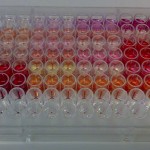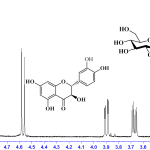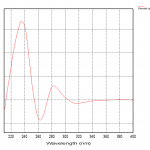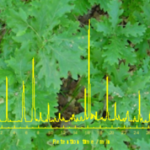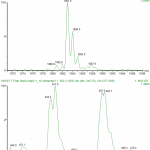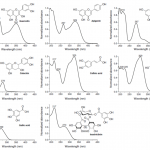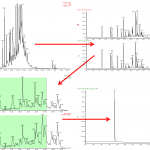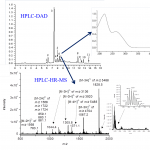Sometimes qualitative analysis of polyphenols is quite simple and this is typically the case with the color reactions that are specific to certain types of polyphenols only In the absence of sophisticated methods – or even with them – researchers often rely on spectrophotometric evidence when they look for the presence of e.g. proanthocyanidins. This […]
Category Archives: Qualitative Analysis featured
NMR Spectra of Polyphenols
Typically NMR data of polyphenols is the last piece of information that is needed to verify their structures NMR is the ultimate tool for polyphenol identification, but since it is quite insensitive, it cannot be used for the routine structural analysis of all the phenolics one detects in plants. For this reason other phytochemical tools […]
CD Spectra of Polyphenols
CD spectra are especially useful in the determination of absolute configurations of e.g. HHDP groups of ellagitannins Utilization of CD measurements in polyphenol and especially tannin analysis has not been as common as it could have been. Therefore we lack published reference CD data for pure tannins. The same gap we had for a long […]
Retention Times
Retention times of hydrolysable tannins and flavonoid glycosides tell surprisingly much of their structures as well Although retention times of poylphenols as such tell very little or nothing of their chemical structures, the combination of UV and MS spectra with LC retention times can bring about the missing component in compound characterization. Of course all […]
MS and MS/MS Spectra of Polyphenols
MS data of polyphenols is incredibly useful when it is combined with the UV spectral information If you have been successful in determining the sub-group of your polyphenol by its UV spectrum, then you practically already know a part of its molecular weight, i.e. that part that contributes to the UV spectrum. Alternatively, if you […]
UV Spectra of Polyphenols
UV spectra of polyphenols are very important and practically the primary information that is obtained for an unknown plant component Different polyphenol subclasses have quite distinct chromophores in their structures, although naturally some common features can be found as well. Still, UV spectra obtained e.g. by LC-DAD are especially useful in the first characterization step […]
Compound Purification
Plant cells are superior chemists and humans will never catch up with these skills: the fanciest compounds must be purified from plant sources now and in the future? It is quite difficult to study the true bioactivities of natural metabolites without both full purification and identification of the studied compounds. We can achieve both of […]
LC-assisted Methods
Sometimes qualitative analysis of polyphenols is simple and typically the use of LC-assisted methods really simplifies the life of a phytochemist Some 25 years ago the life of a phytochemist was much more complicated than nowadays. Back then it was relatively rare to find LC-MS instruments in the lab and this meant that all the […]

